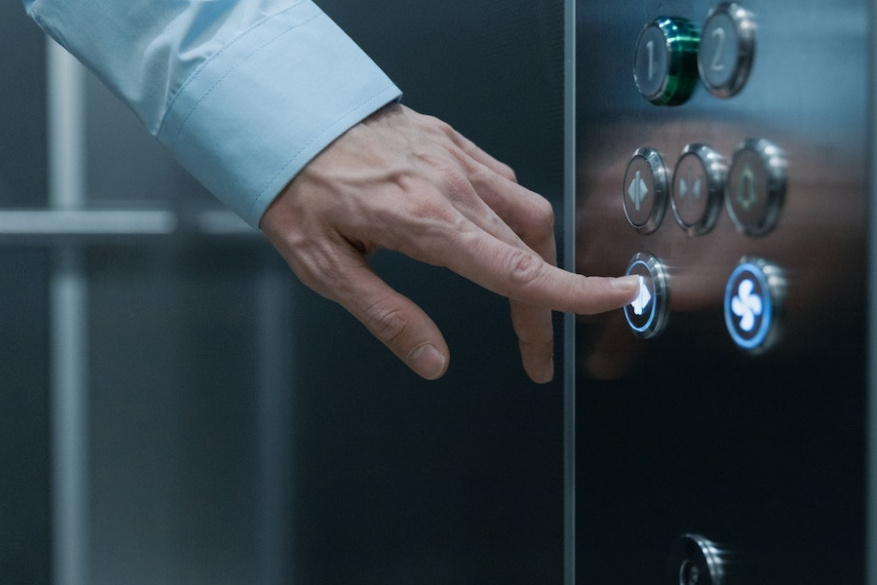- Company
- Products
- Customer Access
- News
- Contact
- Ecommerce
- Marketing & Sales:
+34 954 514 500
sales@hidral.com
This website uses its own and third-party cookies to improve our services and collect information about your browsing. If you click "accept" or continue browsing, we will consider that you accept the use and installation of your device or device. You will find more information in our Cookies policy.
15/12/22

We use lifts practically every day: in shopping centres to move between floors, in apartment buildings, at work, etc. They have become an important part of our daily lives. But have you ever wondered who was its creator or the parts that make up a lift? Hidral tells you an interesting series of curiosities about lifts
There are many curiosities about lifts. First of all, it is worth mentioning that lifts are an ancient invention whose prototypes already existed in ancient Greece. Thousands of years later, others had the intention of creating lifts, such as Matthew Boulton, James Watt or Louis XV - in fact, it is said that the first lift was created in 1743 in Versailles for him. However, these were prototypes incapable of transporting people to great heights.
Therefore, the true inventor of lifts as we know them today is said to be Elisha Otis. In fact, it was he who took the first step with the creation of the first safety brakes to restrain the car in the event of a heavy fall. Specifically, the first public use of the lift was on 23 March 1857 in New York, in a five-storey building, and it worked thanks to a steam engine. It was not until 1880 that the first electric lift was created.
Another curiosity about lifts and their creator: if it had not been for Otis and his braking system, it would have been impossible to build buildings with more than five floors.
The most important parts of the lifts are the machine room, the cabin and the different safety devices. Here are the most interesting facts about lifts and their parts.
Inside the machine room we find the control panel and the traction system. On the one hand, the control panel is the brain of the lift, it is the place from which the rest of the parts of the lift are controlled. Some of its functions are to control the movements, the stops, the starts, the safety system, the speed, etc.
On the other hand, as a curiosity about lifts, the traction system varies depending on the type of lift. If it is a hydraulic lift, it will have a hydraulic drive unit, while if it is an electric lift, it will have a motor with a traction pulley.
This is the best known part, the basic element of the lifts. It is the place where people are placed in order to use the lift. It is made up of the box and the chassis (outer part attached to the traction cables). It is here inside where the buttons are located to give orders to the lift.
They are the most important element for the safety of people using lifts. There are different devices to carry out this task: the door operator (to open and close the doors), parachutes (levers that stop the fall or excess speed), speed limiter (if the speed of the lift is excessive, it is activated and the cabin stops) and shock absorbers (it softens the braking in the event of a sudden fall and cushions it, as its name suggests).
The following dates stand out in the chronological evolution of lifts:
- 1743: the first lift is installed in the Palace of Versailles for the personal use of Louis XV.
- 1852: Elisha Otis invented the first lift brakes.
- 1857: the first public lift is installed in New York.
- 1867: Léon Edoux creates the first hydraulic lift in France.
- 1880: Von Siemens creates the first electric lift.
- 1949: the lift operator is replaced by an automatic control system.
- 1950: the world's first lift with automatic doors is built in Dallas, USA.
Other general facts about lifts are as follows:
- They are 20 times safer than stairs.
- The fastest lift is in China and reaches 75 km/h.
- The highest lift is 326 metres high.
- Music in lifts appeared in the 1920s to calm those using the lift for the first time.
- The mirror in lifts is intended to create a sense of spaciousness.
- In the past, the figure of the lift attendant to accompany passengers in the lift was very common.
After knowing these curiosities about lifts, their beginnings, parts and evolution, you may be considering buying and installing one. At Hidral, we manufacture exclusively for lift professionals, who demand the highest quality and safety. With us, they will have it. Enter our website and check all the lift models we manufacture.